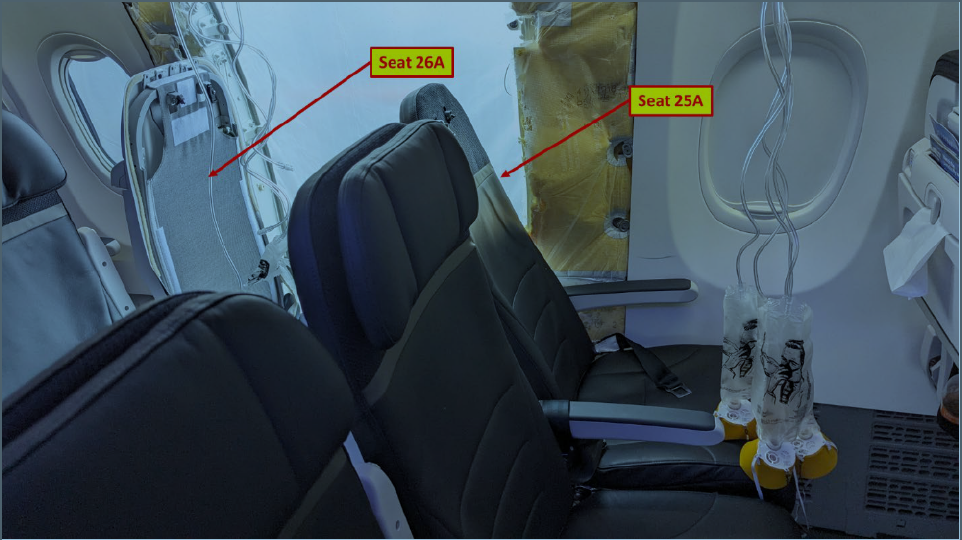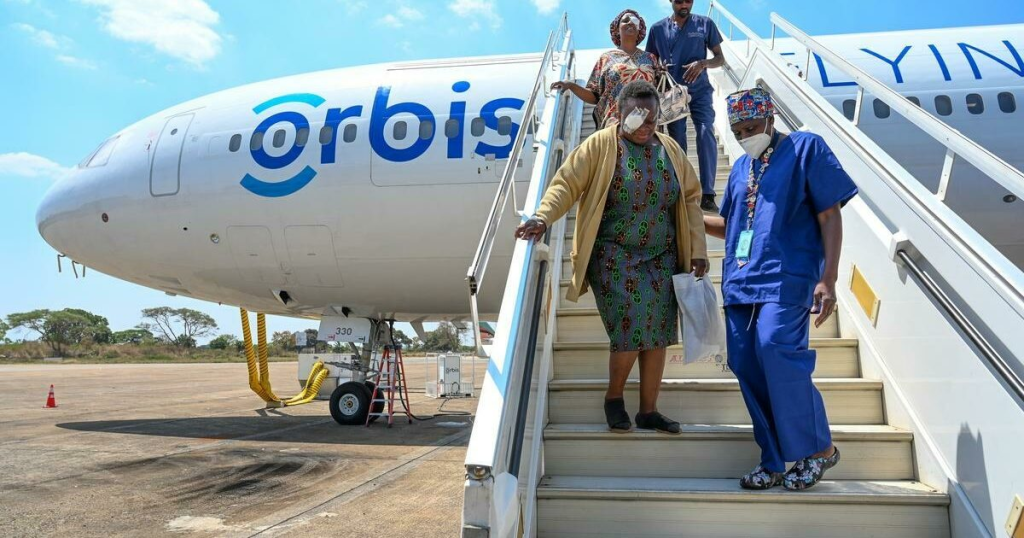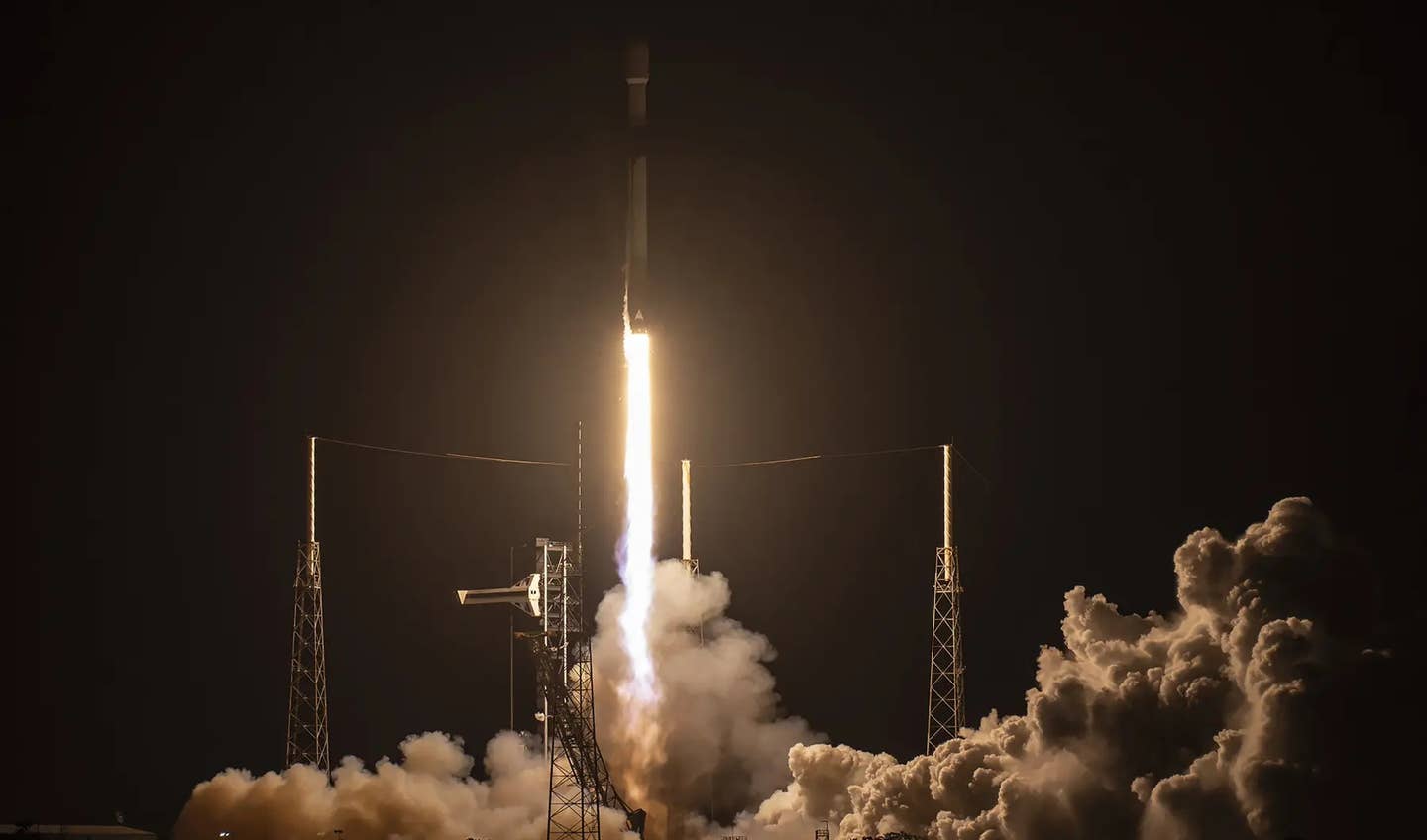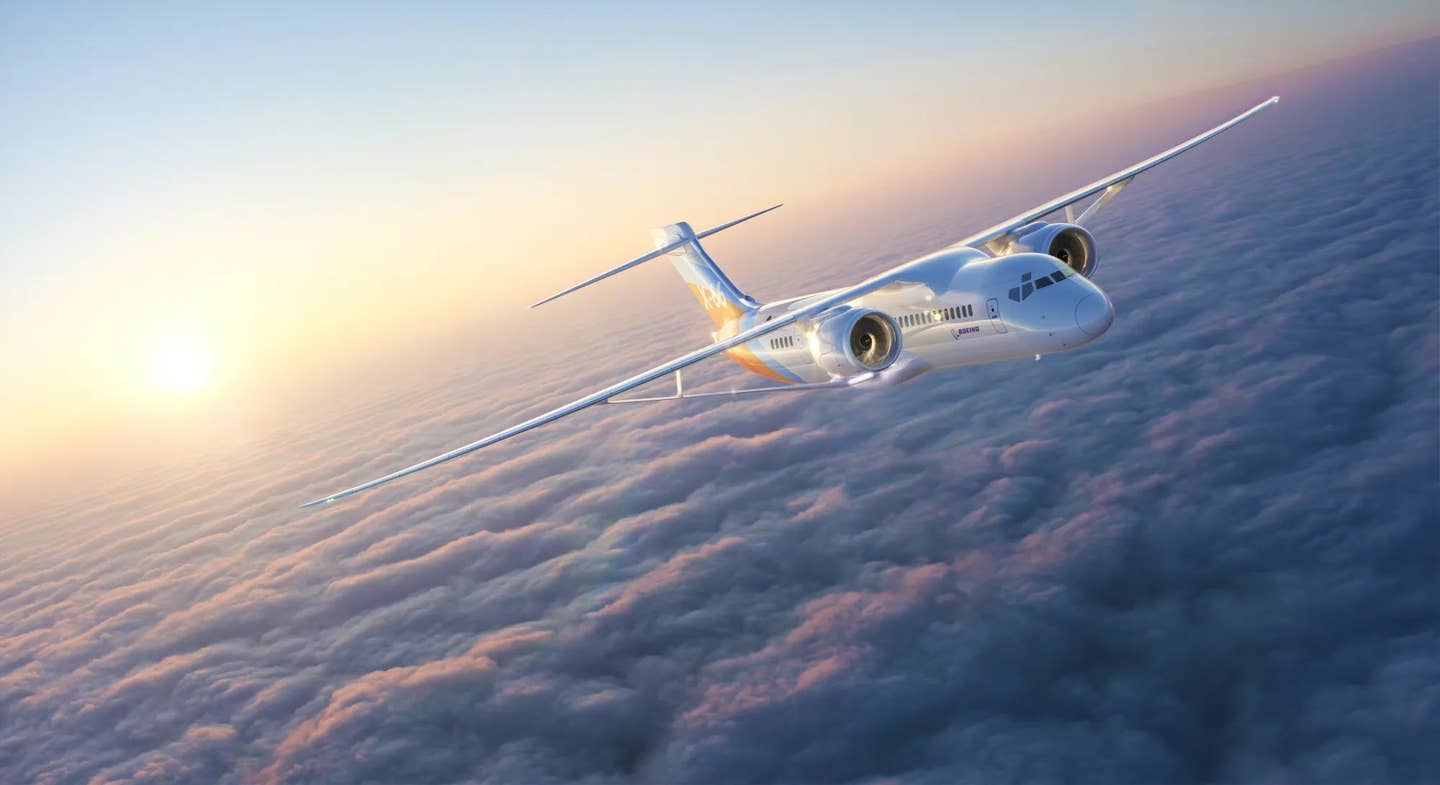NTSB Reports No Bolts in Blown Out 737 Max Door
The Boeing airliner flew missing critical parts.

Photo of seat rows 25ABC and 26ABC in the preliminary NTSB report. [image source: NTSB report]
The National Transportation Safety Board (NTSB) has released its preliminary report on the investigation into the loss of a door plug during flight aboard Alaska Airlines Flight 1282. According to the report released today, critical bolts were removed from the door assembly at the Boeing Factory in Renton, Washington and evidently were not replaced before the aircraft entered service.
The Boeing jet had a mid exit door (MED) blow out just minutes after taking off from Portland International Airport (KPDX) as the aircraft climbed through 16,000 feet. The pilots declared an emergency and returned for landing.
The NTSB spent several days in the Portland area gathering evidence, including the blown mid exit door (MED) which was recovered from a backyard. The door has a series of stop pads that line it up with the fuselage. Four bolts are used to secure the door in place.
- READ MORE: More Trouble for Boeing Max
Investigators closely examined the recovered MED, looking for witness marks that would indicate the four required restraining bolts designed to keep the door in place were installed on the aircraft at the time of the event.
The 19-page report states, "Overall, the observed damage patterns and absence of contact damage or deformation around holes associated with the vertical movement arrestor bolts and upper guide track bolts in the upper guide fittings, hinge fittings, and recovered aft lower hinge guide fitting indicate that the four bolts that prevent upward movement of the MED plug were missing before the MED plug moved upward off the stop pads."
According to the report, the MED for the accident aircraft was built by Spirit AeroSystems in Malaysia and then shipped to Spirit AeroSystems in Wichita to be added to the fuselage. The fuselage was delivered to the Boeing factory in Renton in August of 2023. In September, it was noted that there were five damaged rivets on the edge frame forward for the left MED plug. A photograph of this was included in the NTSB report.
In order to replace the damaged rivets, the left MED plug had to be opened, which entailed the removal of the two vertical arrestor bolts and two upper guide track bolts. Records show that the repairs were made by Spirit AeroSystems personnel. A photograph of the MED plug closed with no retention hardware was sent via text to Boeing team members who were discussing interior restoration after the completion of the rivet work during the second shift the next day.
The report further states, "The investigation continues to determine what manufacturing documents were used to authorize the opening and closing of the left MED plug during the rivet rework."
The Details
The aircraft was delivered to Alaska Airlines on October 31, 2023, and put into service on November 11. Prior to the accident flight, the flight crews had noticed and reported three separate anomalies with the aircraft's pressurization system. As there is a triple redundancy, two run by computer and one manually, FAA rules allowed the aircraft to remain in use, although the airline removed it from overwater operations until maintenance could be performed. At the time of the accident, the aircraft had accumulated 510 total hours and 154 cycles (takeoffs and landings).
The Aftermath
There were 177 people on board Flight 1282. The NTSB report notes that seven passengers and one flight attendant received minor injuries. The force of the decompression ripped open the cockpit door and deformed the interior of the cabin. Several seats were twisted, and loose objects such as cell phones, paper, and toys were sucked out into the night sky. Video of the aftermath showing oxygen masks hanging down and a gaping hole in the side of the airline has gone viral, as some of the passengers, fearing the airline was going to crash, sent goodbye messages to loved ones even before the airliner landed without incident back at PDX.
Within hours, Alaska Airlines grounded its fleet of 737 Max 9. The next day, the FAA issued a blanket grounding for all the aircraft pending inspections.
Alaska Airlines and United Airlines spent the better part of two weeks with a significant portion of their fleets grounded. The aircraft have since returned to service.
Meanwhile, the FAA and NTSB are continuing with the investigation, including putting Boeing and its contractors under more scrutiny for their manufacturing and quality control processes.

Sign-up for newsletters & special offers!
Get the latest FLYING stories & special offers delivered directly to your inbox






